I’m beginning a serie of articles dedicated to this little imaging bomb that is the ASI224MC camera from ZWO. It’s quite different from the PLA-Mx that I have been using this past years, first because of its pixel size… Let’s take things by the beginning: the setting of the sampling!
The ASI224MC is currently THE planetary camera. This is quite an event as the last time a color camera was the best imaging tool for planets, it was some fifteen years ago with the good old ToUcam Pro. Its arrival in my equipment is an occasion to get back talking about a very important notion in astrophotography: the sampling. I talked about it already on the blog: What is the sampling?
There was an important problem with my telescope. For a few years I have been using a 250 mm Gregorian with a very long focal length at prime focus: 8 meters! This can be nice because I can get rid off any Barlow lens to image planets, but as the primary focal length of a telescope can’t vary, it’s necessary when choosing a camera to evaluate how does its pixel size fits well or not. For my telescope, the sampling can be evaluated as follows:
Minimal theorical sampling: 0,24″(arcsecond) per pixel, or two pixels for the resolving power (RP) of 0,48″for a 250.
Maximal theorical sampling: 0,16″/pixel, or three pixels for the RP. This is often the chosen value by planetary imagers because it maximises the capacity of the chip to detect the smallest variations of contrast, and so the smallest details.
In practice, the 8 meters of focal length makes the PLA-Mx and its 5,6 micron sized-pixels already quite oversampled since the value is 0,14″/pixel. It makes the setting of the camera and the focusing quite touchy already, it also asks for an intensive use of WinJupos derotation technics, but the camera is performing very well. But since I can’t change the focal length, it could be a problem with the ASI224MC, because the 3,75 micron-sized pixels require a shorter focal length than the PLA-Mx. The sampling at prime focus of the Gregorian is now getting awfully hudge: 0,09″/pixel, so no less than 5 pixels for the RP !!
Facing the risk of a massive over-sampling, I have decide to test a well-known technic that is the binning mode. When binning the image of the camera the pixels are re-arranged by group, for example 2×2 for binning 2x. The image is then two times smaller, but four times brighter, and the sampling of my telescope goes down to a theorically perfect 0,18″/pixel (or 2,7 pixel for the RP).
But to be sure I have of course tested the idea on the field and here are the results after several imaging nights. So far however, I don’t know if the process of binning itself can be responsible in some way for the differences.
Using the camera for color imaging
At left is a comparison between two RGB images of Jupiter taken on April 1st, 2016, in binning 1 and binning 2. To make the comparison more easy, both images have been mapped with WinJupos and gif-animated.
Of course the variations of conditions can always explain differences but I have made this test several times and the results were consistent :).
To my eyes the image is noticeably better in binning 1. I would have a loss of resolution in binning 2x (remember in theory I should not)
If this loss is not due to the process of binning itself, people would explain this by the fact that color cameras have the reputation of require a longer focal length than black & white ones. The idea have however been critisized by american observer Dan Llewellyn in a recent article in Sky & Telescope : Redeeming Color Planetary Cameras.
Use of the camera for near infrared imaging
Despite beeing a color camera, the ASI224MC is none the less very performing in IR, a very interesting wavelength for planetary imaging.
The sampling conditions, however, are now different: the resolving power of a telescope is inferior in near infrared. If the theorical RP is 0,48″in green light for a 250, it fells to 0,61″in near infrared at a wavelength of 700 nanometers. The useful focal length in infrared is shorter than in visible light. Under such conditions, is the 2×2 binning getting closer to the high resolution imaging ?
The comparison now is not that clear. The images look very close at the center of the disk but the northern hemisphere is noticeably more resolved in binning 1x. The seeing may have introduced a bias.
Taking into account how does the RP vary with the wavelength, it looks like the differences in RGB is not artificially biased by the process of binning the image. If it was the case, the problem would be clearly visible in IR as well…
As a first conclusion…
The ASI224MC must require a very long focal length to reach high resolution. The “3 pixels for the RP” rule could now be looked at as a minimum and not a maximum. Fortunately, the very high sensitivity of the camera makes it easier to go along with the massive over-sampling: even in bin 1, on Jupiter, I was still able to run it up to 100 frames per second, very close to the theorical minimum of 130 fps!

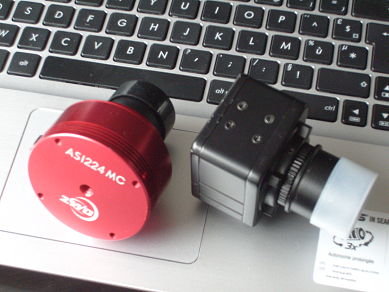
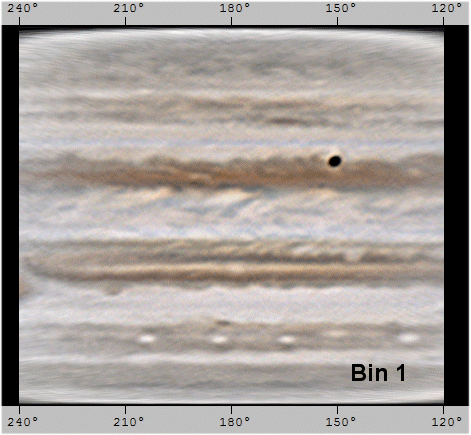
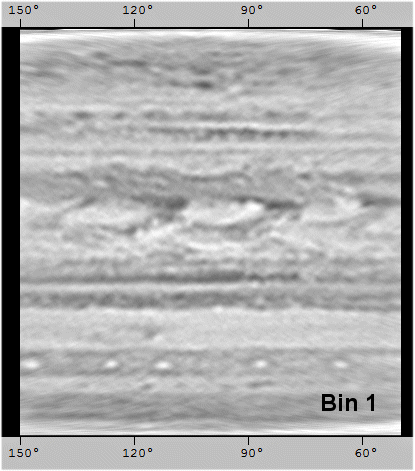
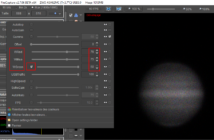
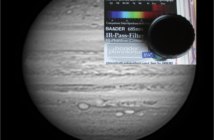
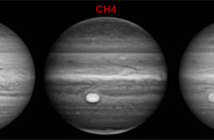
6 Comments
Wow, Conrad has used about one meter more than I, with my C14 and Powermate 2X stay at 7820mm.
With seeing we have here in Brazil I think he’s abusing a bit, LOL.
Hello Conrado :) 9 meters that’s one meter more than me ! Is not getting hard on Jupiter ?
Thanks Grant and Avany !
Many people told me that binning a color camera was really a problem (a friend of mine told me that in term of resolution, it was even equivalent to doing a 4×4 binning!) so it’s too early to draw definitive conclusions. I may consider buying a 0,5 reducer to make more comparisons.
Dear Christophe, I was really hoping for your evaluation on 224MC. It is really a step ahead for a good balance between cost X benefit . I am using it (as my good friend Avani) for quite a while and the results are quite good , but I am still exploring its capabilities. My basic setup for planetary pics is an Orion Optics VX10L (FD 1600) and a TV Powermate 5X , thus getting around 9000 mm of EFD (with good seeing). For lunar closeup views, a PM 2,5X with a IRPass filter is a good combination. I haven´t tested it yet with binning. Thanks a lot for sharing your appraisal, very interesting and..waiting for further ones :-) Regards !
Dear Friend Christophe!
A great article, I have already been using ASI 224 almost a year and I am truly delighted with this camera.
My usual setup has been C14 Edge + ASI224 + Powermate 2X with L filter Astronomik design, which allows me to raise ad / f 3910mm my telescope to 7820mm and comes only corrobar results that this camera was made to be used with long focal lengths.
I have often used the IR filter 685nm Pass the Baader with excellent results, currently have been testing a filter generic open L broadband, into the infrared, and it seems that the result is better.
I have a barlow Tele Vue 3X but could not the good results of Powermate 2X, I think more for limiting than seeing a difference in quality between them or disability of the camera.
If you want to see some results I have gotten see my page on AstroBin: http://www.astrobin.com/users/astroavani/
His work is a source of inspiration and encouragement for us astrophotographers.
Hug!
HI Christoph – good start to an investigation, for sure. Three points, though: 1) Colour cameras have had equal resolution to mono cameras since the advent of AutoStakkert2. The popularity of Emil’s wonderful stacking application (in particular, the method used for stacking colour images) in conjunction with the advent of the ASI120MC a few years ago was really what precipitated the assertion a colour camera has the same resolution as a mono cam. This was long before Dan Llewellyn’s article in S&T. He may be the most vocal on this topic, but only by merit of writing an article in a popular amateur magazine.
2) Binning – how do you bin a colour camera without destroying the bayer matrix?
3) Might you hazard a guess at this stage as to a recommended multiplier to use for the ASI224MC in the context of “ideal focal ration = M x “sensor pixel size”? Historically, this number has been around M=5. Are you now suggesting it should be larger?
Thank you,
Grant in NJ